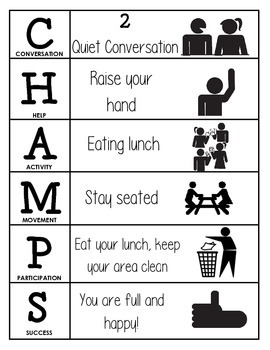NH Lived Experience Workforce Advancement Blueprint

The NH Lived Experience Workforce Advancement Blueprint is being drafted to present actionable directions for development and enhancement of the workforce of individuals with lived experience across New Hampshire’s mental health system. This workforce development objective is a stated priority in the 10-Year Mental Health Plan and central to several strategic objectives.
The public comment period for feedback on the draft action recommendations in the NH Lived Experience Workforce Advancement Blueprint is now open, closing on December 31, 2020.
Review the draft action recommendations and use the Public Comment Feedback Form to submit feedback.
Tier 1 systems, data, and practices impact everyone across all settings. They establish the foundation for delivering regular, proactive support and preventing unwanted behaviors. Tier 1 emphasizes prosocial skills and expectations by teaching and acknowledging appropriate student behavior. Teams, data, consistent policies, professional development, and evaluation are essential components for. Positive behavior support offers a holistic approach that considers all factors that have an impact on a child and the child’s behavior. It can be used to address problem behaviors that range from aggression, tantrums, and property destruction to social withdrawal.

The current COVID-19 public health crisis is stressful for all. You are not alone. Everyone is feeling some level of anxiety and discomfort right now. It is normal to feel this way. If you or a loved one have struggled with anxiety or other mental health concerns, this may be an even more difficult time for you.
Mental Health and Substance Use supports and treatment are available to you even during the state of emergency. You can call 2-1-1 to be directed to help. If you are already connected to a treatment provider, stay in touch with them. If your provider has closed, you can call your local Community Mental Health Center.
Call 211 to be connected to help
National Suicide Prevention Lifeline 800-273-8255
Disaster Distress Helpline 800-985-5990
Here are some other tips and resources to help
For more behavioral health resources during COVID-19, go to the NH COVID-19 web site.
The Positive Behavior Support Process: Six Steps for Implementing PBS
PBS begins by developing a team of the key stakeholders or individuals who are most involved in the child’s life. This team should include the family and early educator, but also may include friends, other family members, therapists, and other instructional or administrative personnel. Team members collaborate in multiple ways in order to develop, implement, and monitor a child’s support plan.

Further Behavioral Support Champs Las Vegas
When developing a behavior support team one must ask the four following questions:
Further Behavioral Support Champs Elysees
- Who are the key stakeholders and individuals in this child’s life?
- Why is collaborative teaming a key element of PBS for this child?
- What do we need to do to make this a successful collaborative experience that will benefit the child and family?
- How are we going to promote the active participation of the family and all team members in the behavior support planning process?
Person-centered planning provides a process for bringing the team together to discuss their vision and dreams for the child. Person-centered planning is a strength-based process that is a celebration of the child and a mechanism of establishing the commitment of the team members to supporting the child and family.
One of the key features of positive behavior support for young children with problem behavior and their families is a commitment to a collaborative team approach. This is especially important for children whose problem behavior occurs in multiple settings such as the home, preschool, therapy visits, etc.
In general, person centered planning processes use graphic recordings (usually words, pictures, and symbols on chart paper) and group facilitation techniques to guide the team through the process. For example, the facilitator is responsible for setting the agenda, assessing equal opportunities for all to participate, handling conflict when necessary, and maintaining the group’s focus. The following well-known person centered planning processes share underlying values and similarities but may differ in their application.
Functional assessment is a process for determining the function of the child’s problem behavior. Functional Assessment or Functional Behavioral Assessment (FBA) involves the collection of data, observations, and information to develop a clear understanding of the relationship of events and circumstances that trigger and maintain problem behavior.

Functional behavioral assessment (FBA) is a process used to develop an understanding of a child’s challenging behavior (Carr et al., 1994; O’Neill et al., 1997; Hieneman et al., 1999). The goal of functional behavioral assessment is to identify the function of the child’s behavior—the reason or purpose why a child behaves as he/she does in specific situations. The process involves collecting information through the use of direct observations, interviews, record reviews (e.g., school and/or medical records, lesson plans, individualized education plans), and behavior rating scales. This information is used to understand patterns of the child’s challenging behavior—the ecological events or conditions that increase the likelihood of challenging behavior (i.e., setting events), what happens before the behavior occurs (i.e., triggers or antecedents), what the behavior looks like (i.e., the behavior), and what happens after the challenging behavior occurs (i.e., consequences). Once collected, the information is analyzed to determine the specific function or purpose of the challenging behavior—whether it occurs in order for the child to obtain something (e.g., attention, object, activity) or to escape something (e.g., demands, activities, social interactions) (Carr et al., 1994; O’Neill et al., 1997). The process is complete when there is enough information that will lead to the development of hypotheses or summary statements (Hieneman et al., 1999) that represent the behavior support team’s best guess or prediction as to what conditions reliably predict the occurrence of the child’s challenging behavior.
The functional assessment process is completed with the development of a behavior hypothesis statement. The behavior hypothesis statements summarize what is known about triggers, behaviors, and maintaining consequences and offers an informed guess about the purpose of the problem behavior.
Once a functional assessment is complete, the next step is to develop a hypothesis statement—a prediction or 'best guess' of the function or reason a child’s challenging behavior occurs. This includes a description of the child’s challenging behavior (i.e., what the behavior looks like), information about the specific predictors or triggers that occurred before the child exhibited challenging behavior, the perceived purpose or function of the child’s behavior, as well as the maintaining consequences that followed. Predictors include both what conditions immediately precede the child’s behavior, as well as any setting events that may be presumed to increase the likelihood of the challenging behavior’s occurrence (e.g., lack of sleep, allergies/illnesses, social and interactional factors). Hypothesis development is a critically important step toward developing interventions that are directly linked to the function of the child’s challenging behavior (O’Neill et al., 1997).
Very young children have brief learning histories (Dunlap & Fox, 1996). In many cases, those with a limited repertoire of behavior will often use one behavior for several different purposes. For example, children often use a general tantrum (prolonged screaming, crying, pulling away) for multiple functions (e.g., request object and escape transition). Therefore, when sorting out hypotheses the support team should address all of the circumstances in which challenging behavior occurs rather than trying to match an individual function to each challenging behavior.
Once the behavior support team identifies its hypotheses, attention should be paid to the way by which hypotheses are written. They should be carefully written either as a series of sentences that include each component (e.g., description, predictors, purpose, maintaining consequences), or as a 'when…then' or 'if…then' statement (Hieneman et al., 1999). Remember the more clearly articulated the hypothesis, the more likely the hypothesis will clearly communicate the team’s understanding of the child’s challenging behavior.
Once behavior hypotheses statements are developed to summarize the data gathered from the functional assessment process, the team can develop a behavior support plan. Essential components of the behavior support plan are prevention strategies, the instruction of replacement skills, new ways to respond to problem behavior, and lifestyle outcome goals.
The behavior support plan represents the culmination of the assessment process. Typically developed in connection with person-centered planning, the behavior support plan is the team’s action plan outlining the specific steps to be used to promote the child’s success and participation in daily activities and routines. In order to be most effective, behavior support plans should be both carefully developed and clearly written using plain language, incorporate the values of the family and support team, identify any prerequisite resources and training needs for implementation, and include individual components that are both easy to use and easy to remember.
Behavior support plans must contain the following components:
Behavior Hypothesis Statements – Statements that include a description of the behavior, triggers or antecedents for the behavior, maintaining consequences, and the purpose of the problem behavior.
Prevention Strategies – Strategies that may be used to reduce the likelihood that the child will have problem behavior. These may include environmental arrangements, personal support, changes in activities, new ways to prompt a child, changes in expectations, etc.
Replacement Skills – Skills to teach that will replace the problem behavior.
Consequence Strategies – Guidelines for how the adults will respond to problem behaviors in ways that will not maintain the behavior. In addition, this part of the plan may include positive reinforcement strategies for promoting the child’s use of new skills or appropriate behavior (this may also be included in prevention strategies)
Long Term Strategies – This section of the plan may include long-term goals that will assist the child and family in meeting their vision of the child (e.g., develop friends, attend a community preschool program).
The effectiveness of the behavior support plan must be monitored. This monitoring includes measurement of changes in problem behavior and the achievement of new skills and lifestyle outcomes.
Once the child’s behavior support plan is developed, the behavior support team’s role is both to implement the plan itself and to monitor progress toward outcomes valued by the child’s family. The keys to successful outcomes are frequent data collection and consistency—relative not only to both when, where, and who implements the plan but also to how the plan is implemented (i.e., whether or not the same intervention steps are followed). Data collection (e.g., direct measurement and indirect measurement) should occur to document whether the plan is implemented with consistency and is effective in achieving the identified goals, as well as whether or not the replacement skills are durable over time (maintenance) and/or across settings/contexts (generalization). Data should be both easy to collect (e.g., rating scales, check sheets) and should be periodically reviewed by the behavior support team to ensure communication, make any adjustments as needed, and review progress relative to the long-term vision of the child and his/her family.
